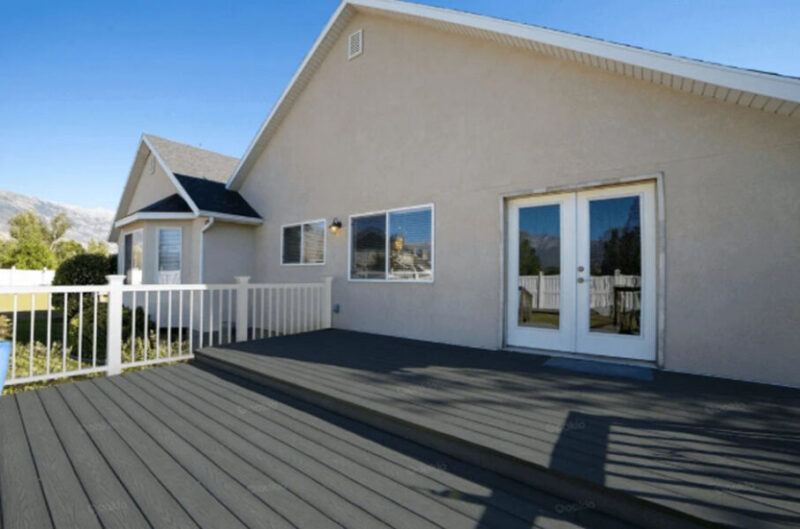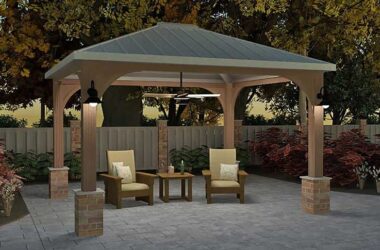When it comes to building and furnishing our homes, the choice of materials can make a big difference. I’ve been curious about composite wood, especially with all the buzz around sustainability and eco-friendly options. Is it really a green alternative or just another product wrapped in marketing claims?
Composite wood often combines recycled materials with new resources, making it an intriguing option for those of us looking to minimize our environmental impact. But does that mean it’s truly sustainable and recyclable? Let’s dive into the details and uncover whether composite wood is a responsible choice for our planet and our homes.
Material Composition
Composite wood consists of various materials designed to enhance durability and sustainability. Understanding its composition sheds light on its environmental impact.
Wood Component
The wood component of composite wood typically includes recycled wood fibers and sawdust. This recycled content reduces waste, utilizes byproducts from other industries, and contributes to sustainable practices. Manufacturers source this wood from post-consumer products, making it an eco-friendlier choice compared to traditional timber.
Plastic Component
The plastic component often consists of recycled plastic materials, such as polyethylene or polypropylene. These plastics enhance composite wood’s resistance to moisture, insects, and rot. By incorporating recycled plastics, composite wood reduces reliance on new fossil fuel-based resources and helps divert waste from landfills.
Additives and Bonding Agents
Additives and bonding agents in composite wood improve its performance and longevity, especially in deck construction. Commonly used agents include adhesives and preservatives that resist decay. Many manufacturers opt for low-VOC or water-based options to minimize environmental impact while maintaining quality and safety standards.
What Makes Composite Wood Eco-Friendly
Composite wood offers several eco-friendly features that contribute to its sustainability. It’s an excellent choice for those seeking environmentally conscious building materials.
Use of Recycled Materials
Composite wood integrates recycled materials like wood fibers and plastics. By utilizing these resources, I reduce waste and promote circular economy principles. This recycling process not only diverts materials from landfills but also lessens the overall demand for new raw materials, making composite wood a greener alternative.
Reduced Demand for Virgin Resources
Composite wood minimizes the need for virgin timber. By incorporating recycled wood and plastics, I play a part in preserving forests and natural ecosystems. This reduced demand helps maintain biodiversity and supports sustainable forest management practices, reinforcing the environmental benefits of choosing composite wood.
Long Product Lifespan
Composite wood boasts a long product lifespan, resisting rot, moisture, and insect damage. This durability decreases the frequency of replacements and repairs, which means less waste over time. Oakio Decking enhances these benefits with its warp-resistant core, UV fade protection, and co-extruded cap technology that ensures long-term performance with minimal maintenance. I can confidently rely on composite wood to withstand the elements while contributing positively to the environment.
Low Maintenance = Lower Chemical Use
Composite wood’s low maintenance requirements lead to a reduced need for chemical treatments. By choosing this material, I limit my use of harmful substances like pesticides and sealants, promoting a healthier environment. This eco-friendly characteristic aligns with my goal of minimizing chemical impact on my home and surroundings.
Sustainability in Manufacturing
Manufacturing composite wood incorporates several sustainable practices that enhance its eco-friendliness. From production methods to sourcing, these approaches contribute to its overall sustainability.
Eco-Conscious Production Methods
Manufacturers of composite wood often utilize eco-conscious production methods. Many prioritize the use of recycled materials, which reduces reliance on new resources. Techniques that minimize energy consumption during the manufacturing process further decrease the carbon footprint. Companies frequently adopt low-emission technologies that align with sustainability goals.
Local Sourcing and Transport Impact
Local sourcing plays a crucial role in the sustainability of composite wood. By sourcing raw materials from nearby suppliers, companies reduce transportation emissions. This not only lowers the overall environmental impact but also supports local economies. A reduction in transport distances ensures a smaller carbon footprint, enhancing the overall sustainability of the composite wood industry.
Environmental Benefits Compared to Traditional Wood
Composite wood offers several environmental benefits, especially when compared to conventional timber. These advantages illustrate its potential to contribute positively to sustainability efforts.
Lower Carbon Footprint Over Time
Composite wood combines recycled materials, which leads to lower carbon emissions during production. By reducing the need for virgin timber, it minimizes deforestation and carbon dioxide release. Manufacturing processes for composite wood often prioritize energy efficiency, further decreasing its overall carbon footprint over time.
Water and Soil Protection
Composite wood demonstrates superior resistance to moisture and pests, which helps protect water quality and soil health. Unlike traditional wood, composite wood doesn’t require harmful chemical treatments, reducing the risk of leaching into waterways. This makes it a safer option for environments close to rivers, lakes, and sensitive ecosystems, promoting healthier land and water resources.
How to Choose the Most Eco-Friendly Composite Wood
- Material Composition: Look for composite wood with a high percentage of recycled content.
- Additives: Choose options that use low-VOC or water-based adhesives for reduced environmental impact.
- Sourcing: Verify if the materials are sourced locally to lower transportation emissions.
- Certifications: Check for certifications that indicate sustainable practices, like FSC or LEED.
- Durability: Opt for products with a long lifespan to minimize waste from replacements.
Conclusion
Choosing composite wood can be a smart decision for those looking to make eco-friendly choices in their homes, especially for building a deck. Its blend of recycled materials and durable components makes it a more sustainable option compared to traditional timber. I appreciate how it helps minimize waste while supporting responsible forest management.
By opting for composite wood, I feel like I’m contributing to a healthier planet. Plus, with its low maintenance needs and long lifespan, it’s a practical choice that aligns with my values. If you’re considering a greener alternative for your next project, composite wood might just be the way to go.






